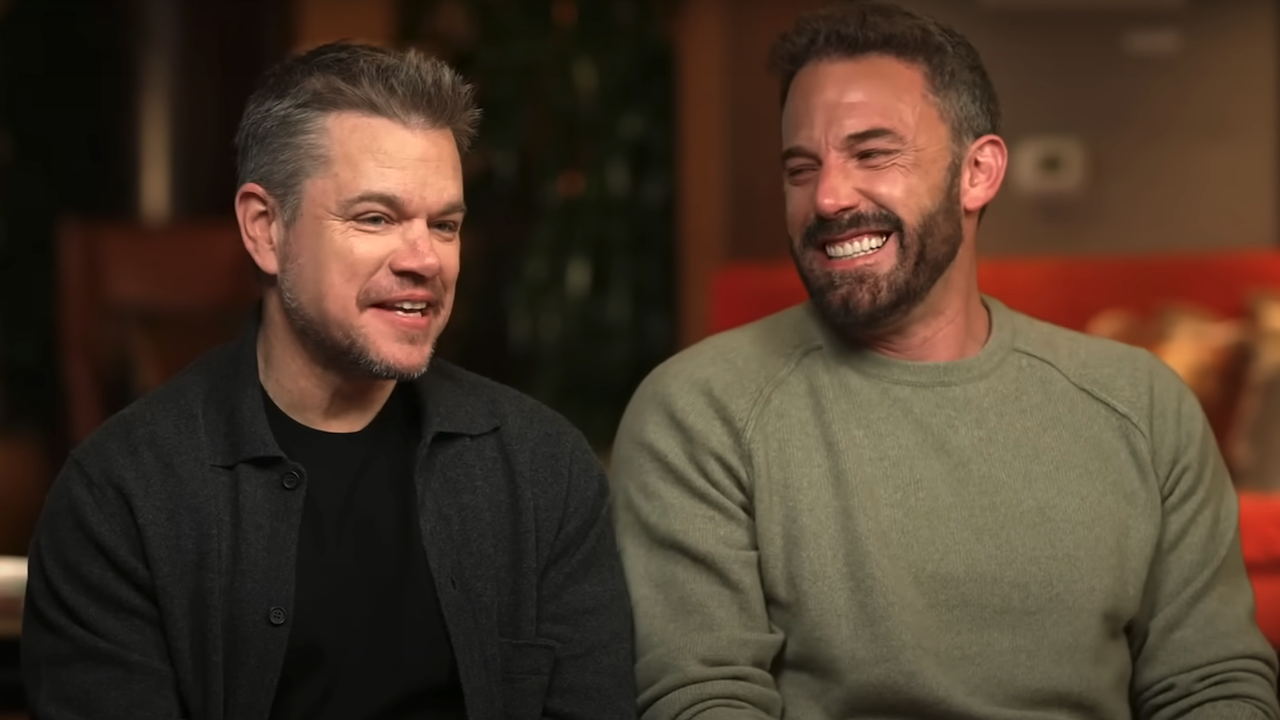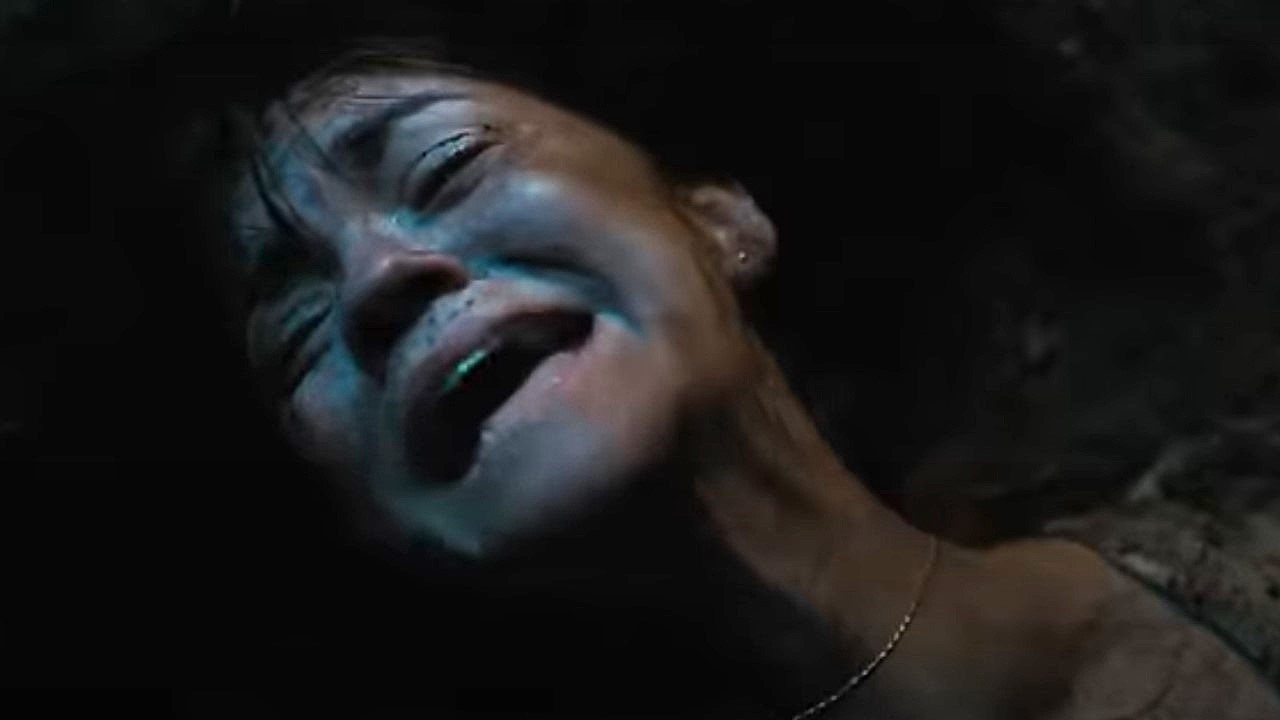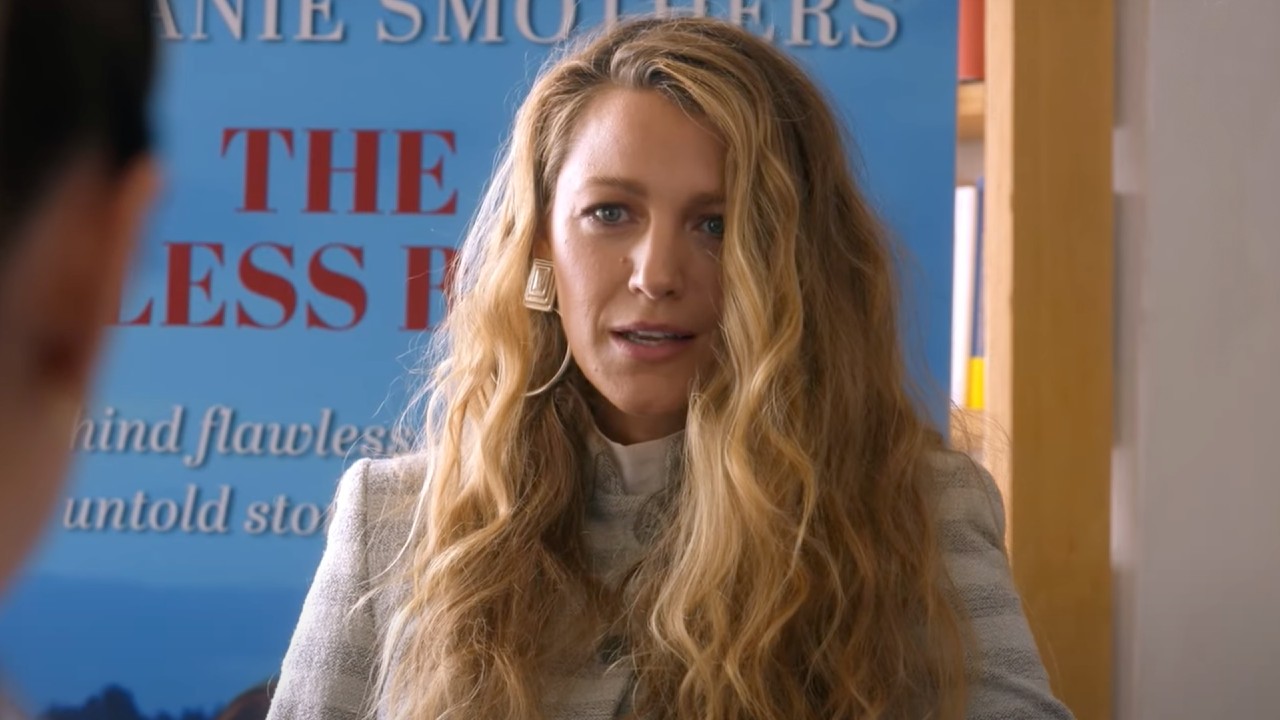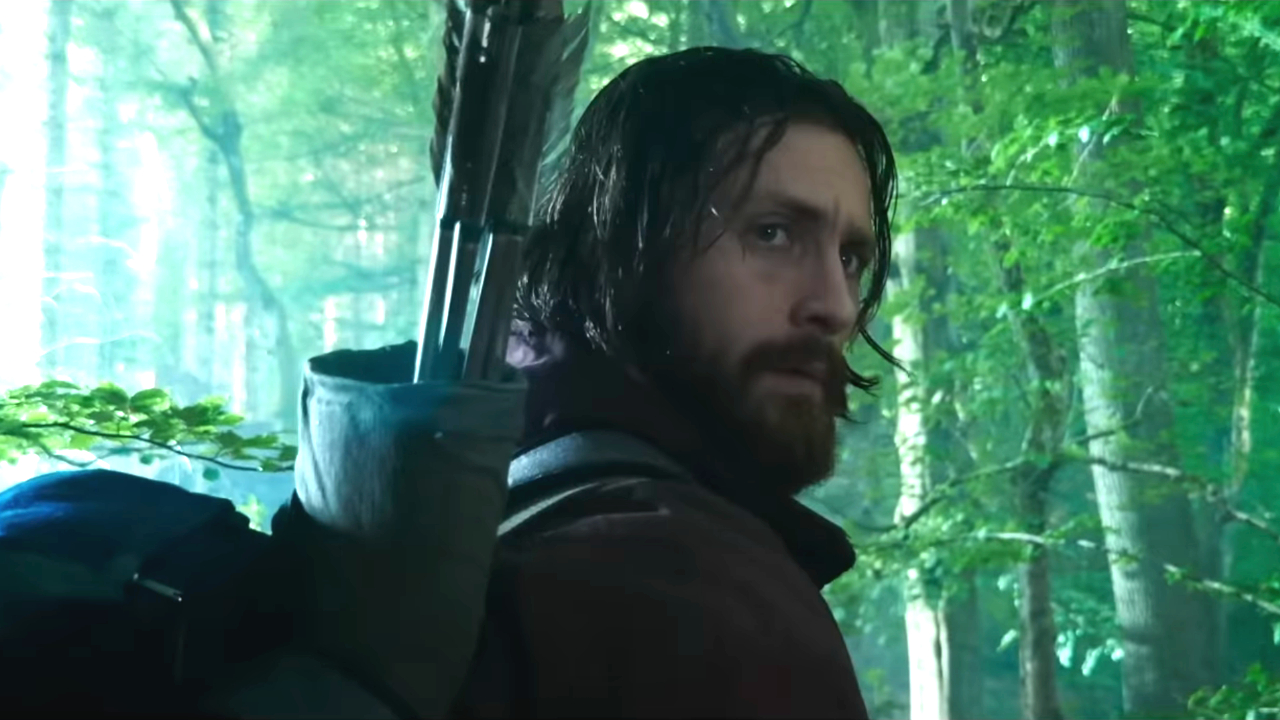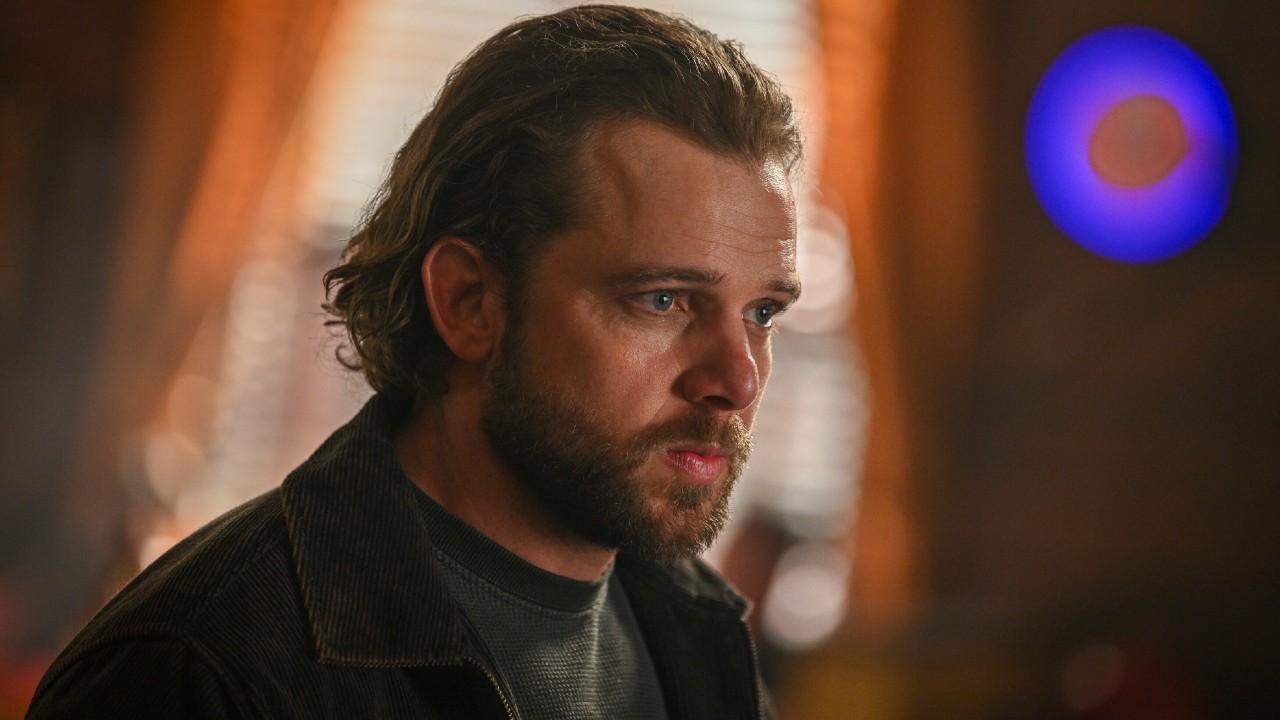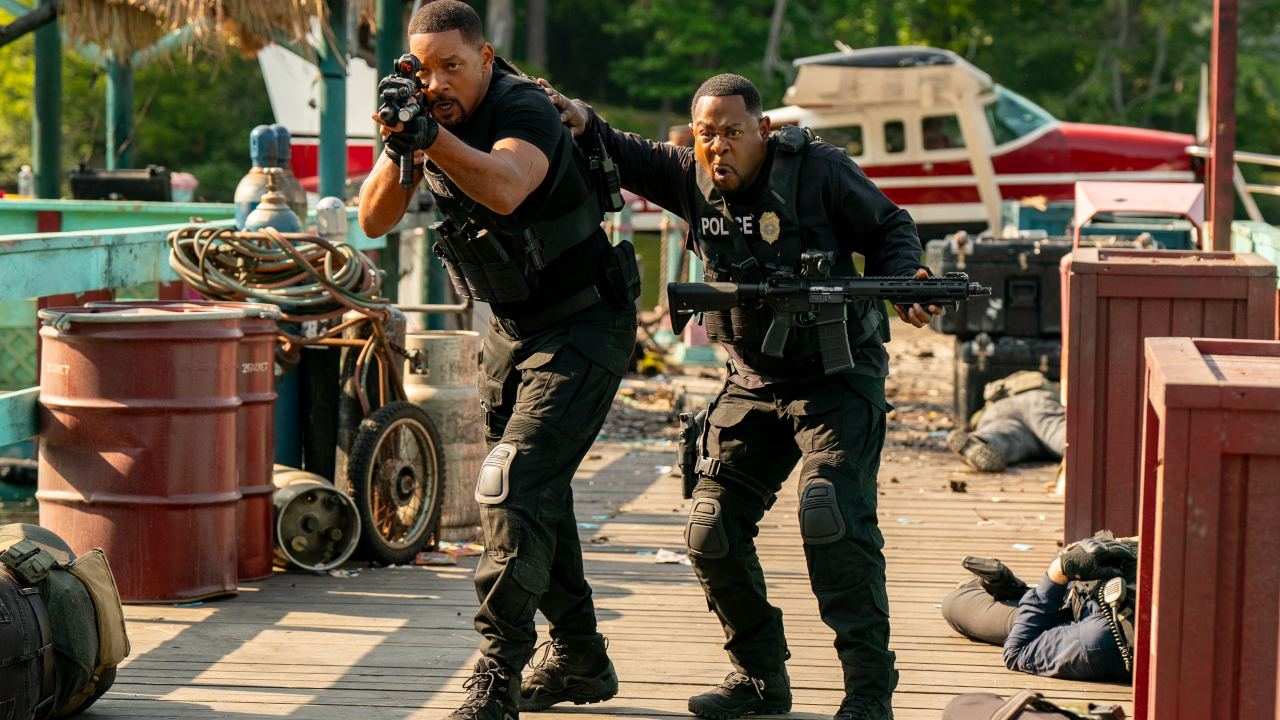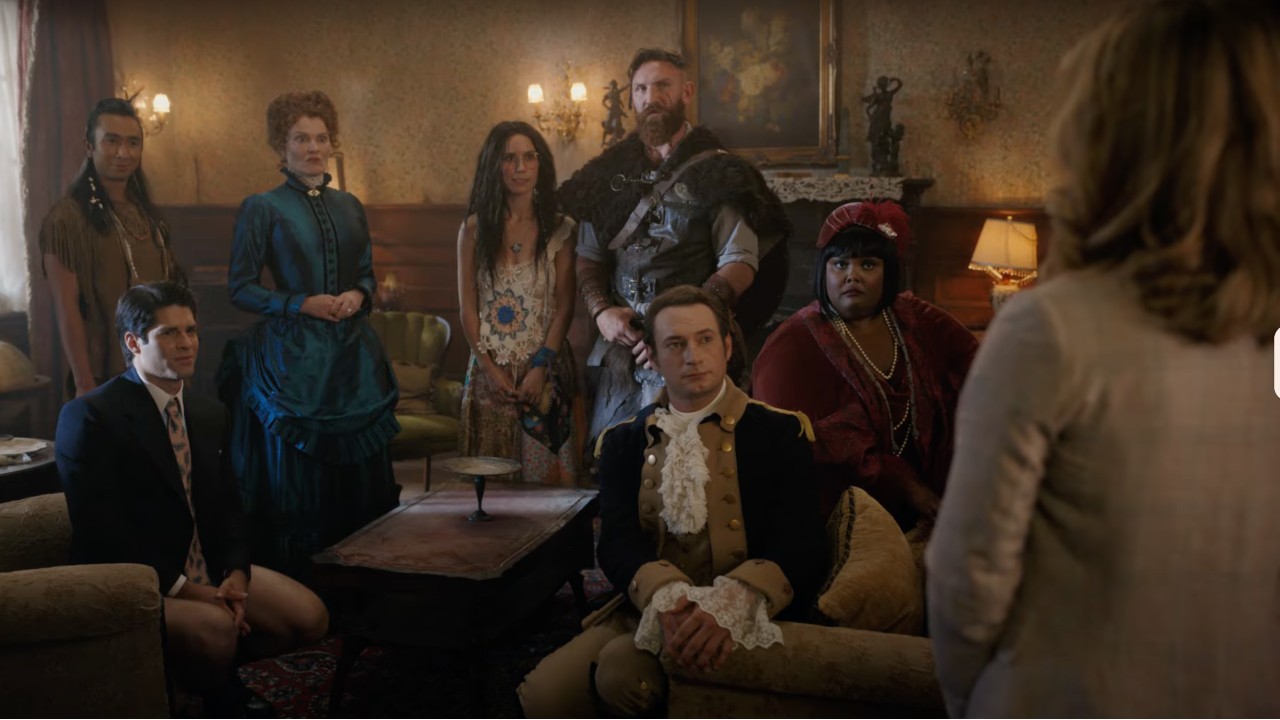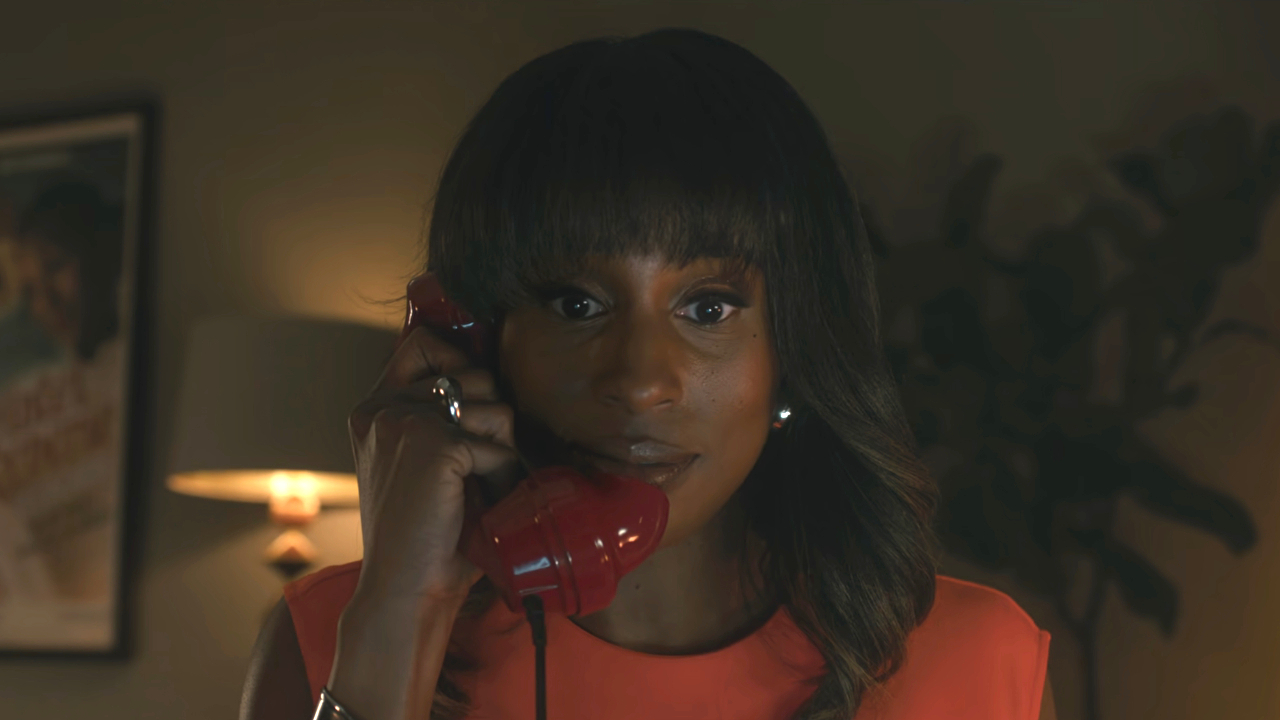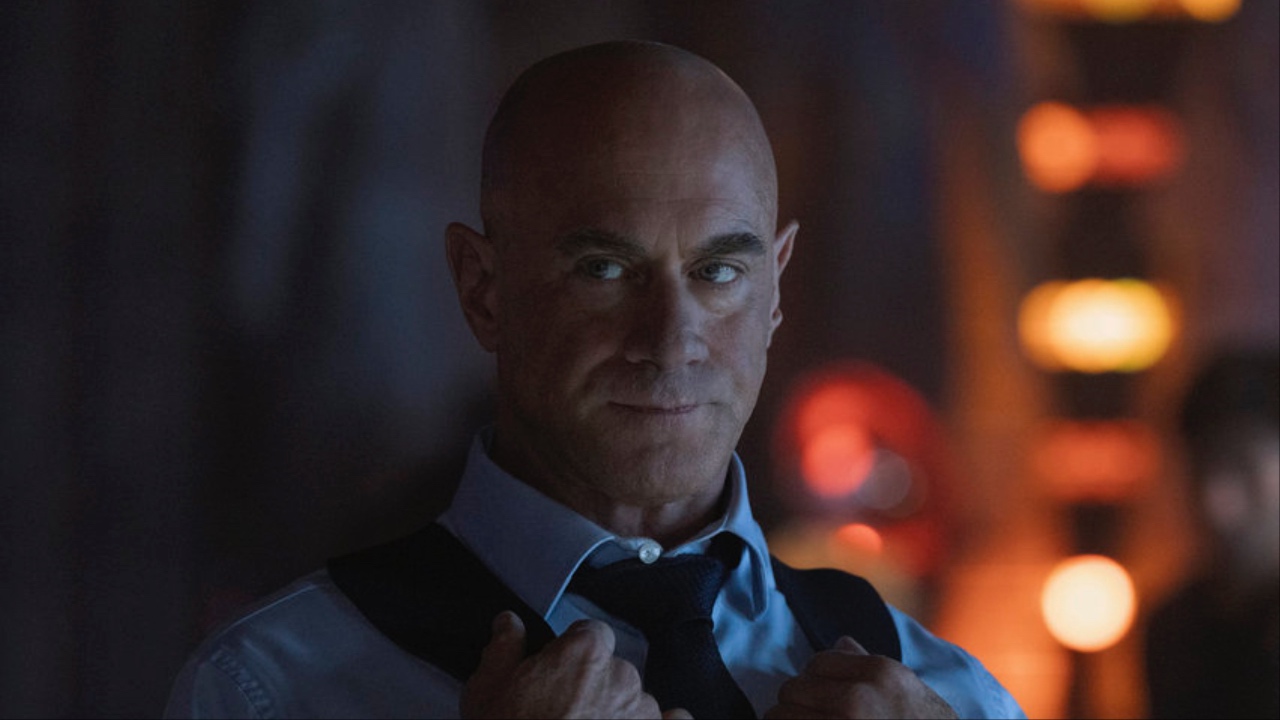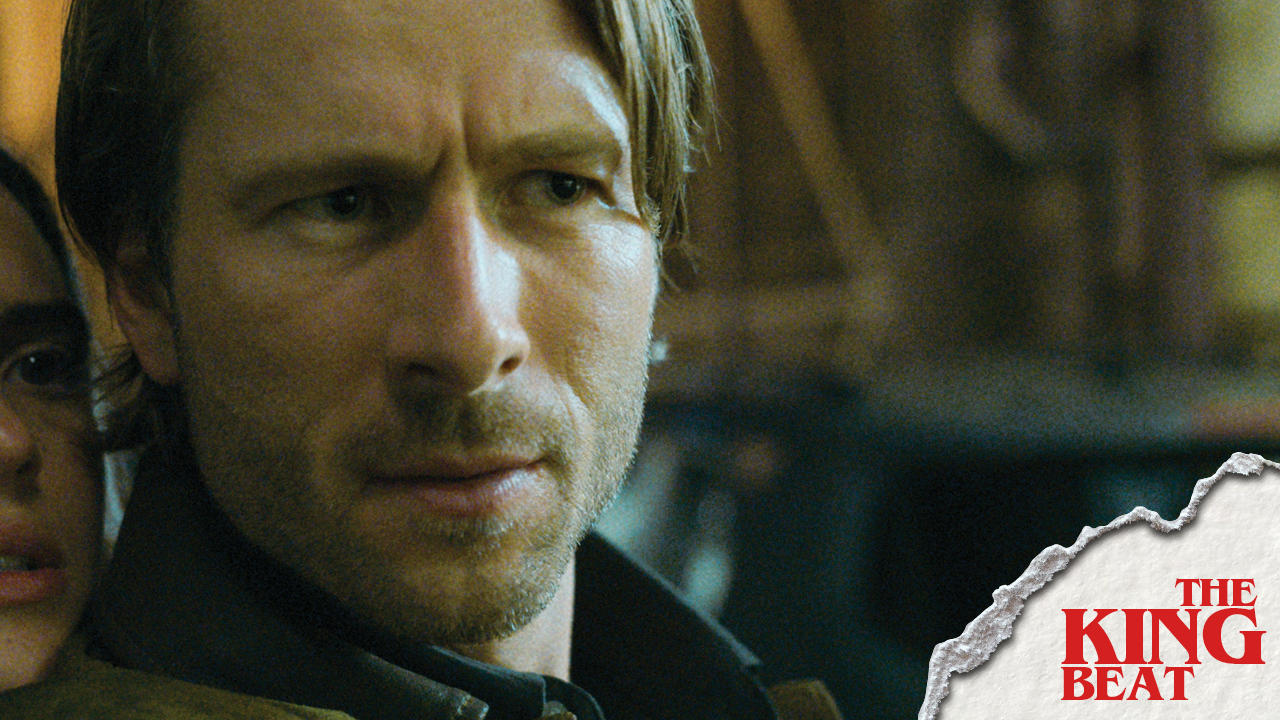Interview: Hot Tub Time Machine's Crispin Glover
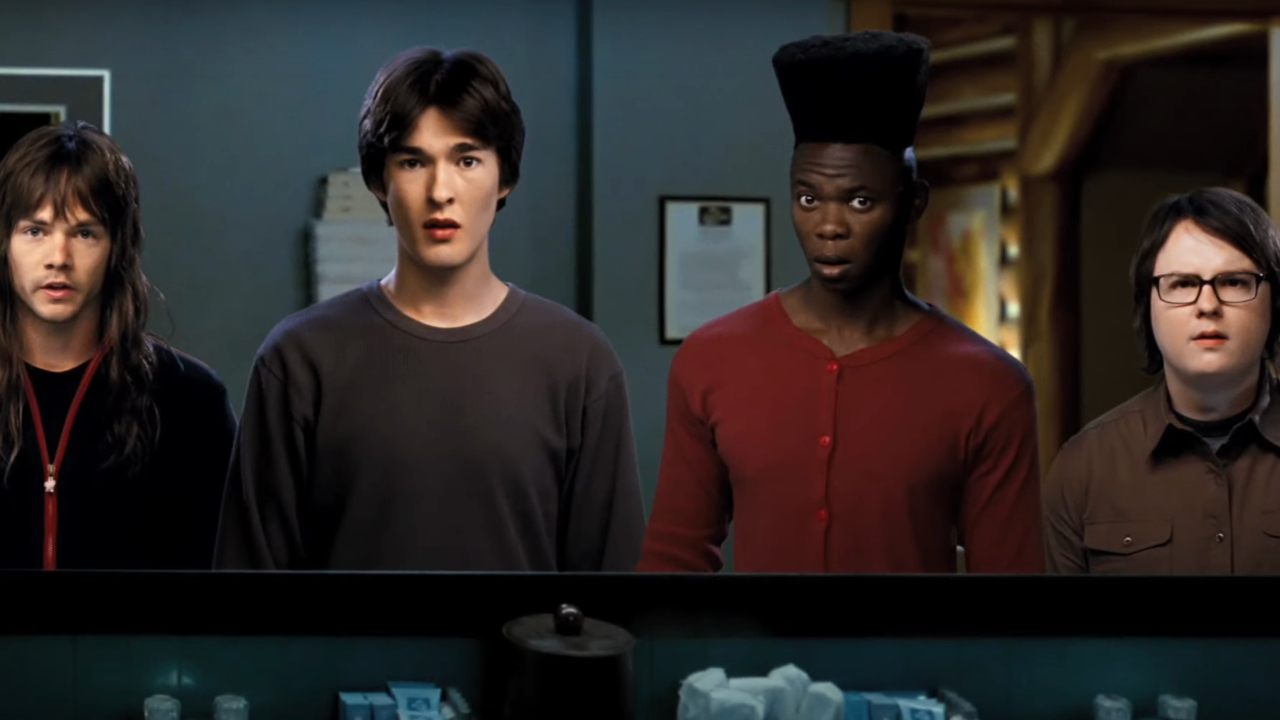
I leaned a number of new things about Crispin Glover while at the Hot Tub Time Machine junket in Lake Tahoe. First off, he’s a successful commercial actor, but also pursuing some personal passion projects on the side. Secondly, the guy is poised to the max. Lastly, damn, Glover’s got gorgeous hair.
There’s a good chance you didn’t even know Glover was in Hot Tub Time Machine. John Cusack, Rob Corddry, Clark Duke and Craig Robinson are featured on the posters and in the trailers, but it’s Glover who’s got one of the most memorable running gags throughout the film. He plays Phil, the hotel bellhop who escorts the gang to their room and the same guy who did so back in 1986. When we meet Phil at the beginning of the film, he’s missing a little something, an arm. But after some hot tub time traveling, we meet the 1986 version of Phil and he’s fully limbed. You know what that means; he’s eventually losing that arm.
Not only did Glover dish on the physicality of his role, but he also addressed his involvement in another little time travel film, Back to the Future. Then there are Glover’s plans for the future. His dedication to use his mainstream work to finance his own films have led him to the Czech Republic where he’s building his own sets. Will It Is Mine be next on his agenda? Find out that and more below.
How’d you get involved with this movie?
I got a message from my agent that they’re interested in meeting with me, with John Cusack and his co-producer for lunch. I got the script that was the existing script at the time and they let me know that they’d only gotten the script two weeks before and that there was this time limitation that they had to do it and there was a release date that was already set and if they didn’t say to do it then, it just wouldn’t be done at all. They did it and it was apparent that there was a lot of reworking that would happen. I had a good time working on the film and I’m very happy to be in it. All of the people were nice to work with. They’re funny and it feels like the film has a good humor.
Did you get to do much adlibbing?
Oh, yeah! A lot of the things that were in the screenplay are there, but it was done in a slightly different fashion than it was written – as it was written in the screenplay …, which would be improvisation. [Laughs]
CINEMABLEND NEWSLETTER
Your Daily Blend of Entertainment News
Your character is part of this great running gag, which would likely have its limits when it comes to improvisation. How much leeway did you get?
There was a fair amount of leeway, but also the things were being changed as we were shooting. Like the elevator sequence that’s in the film, that wasn’t something that was originally written in, but it became apparent that we really needed to have three times where we saw that. We were looking for something that would be visually interesting and that I felt I could play and there were different possibilities of that happening and that’s what we came to agree as being a good thing to do. Another thing that wasn’t in the script was when I come back at the very end. Even when I first read the script when I met with John Cusack and Grace Lower, the first time, I thought it seemed like there should be a payoff for the character. Luckily there was a good energy about going into it and didn’t feel restrictive.
Did Steve ever say to you that one of the reasons he wanted you in the film was as an homage to Back to the Future?
Nobody said that to me, but I’m assuming it was thought. [Laughs] It seemed fairly evident. But nobody actually did say that. Nobody at all, but I figured. It made sense that that had something to do with it.
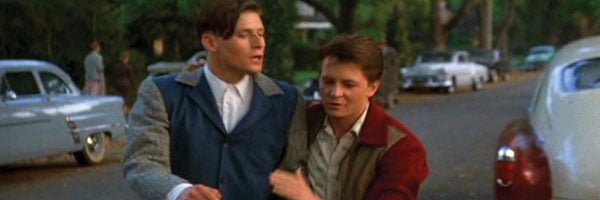
Phil seems like a victim of his own destiny; he’s going to lose that arm. Do you believe in destiny?
Well, I like to believe that it’s good to like what you’re doing. That’s important therefore whatever it is that your destiny is, if you’re liking it then it’s okay. If you’re not liking it then that isn’t okay. It’s bad if you start comparing yourself with other people as opposed to what it is that you’re interested in doing. I’ve been touring around with my own films that I’ve been self-financing and self-distributing and I really like doing that. It’s a lot of work, it’s not easy to do, but I like doing it and then I’ve been funding these films with the films that I’m acting in. I started really doing that in about 2001, but in a certain way, it actually made me appreciate acting in corporate films more than I ever had before and it made me more grateful about the whole thing.
Do you have a selection process when these roles come your way? How do you react to a role like this?
It was a pretty easy decision that it was a good thing to do. There are some films that I haven’t done and at this point now, I would feel like if I can’t make it work on some level then I wouldn’t want to do it. But usually I feel like I can make it work. Not always. There’ve been a couple of things in the last few years that I did not feel like I could make work. But, for the most part, if something comes along and it fits within my quote, which is important for me to adhere to, then it seems like a good thing to do. This film, which I did within, I think, six months of Alice and Wonderland. They’re coincidentally out in the same month. Both of them were just very easy decisions of ‘Is this a good thing to do?’ and I had a really good time working on both of them. And of course Alice in Wonderland is doing really well at the box office and it feels like this film has potential to do quite well as well so I’m happy about it, I’m happy to be in both. And they’re both quite divergent from one another. There’s very different kinds of characters. I don’t know if any of you have seen Alice in Wonderland, but you can see that I’m playing a very different kind of person than I play in this and they were done within a very short time period of each other.
What self-projects are you working on now?
I own property in the Czech Republic and it’s a historical piece of property that was built in the 1600’s. I bought it about six years ago. Next to it is horse stables that I’ve been making into small soundstages. I like to shoot my films on sets and there have been a couple of different variations of what I was planning to do next, but I’ve been getting that whole thing set up to start shooting. My father’s an actor and he and I have never acted together and I’m thinking of doing a screenplay for he and myself to play a series of fathers and sons, so that’s what I’m planning to do next.
What happened to It Is Mine?
It will be another film that I’ll shoot at some point in the future, but both What Is It? and Everything is Fine!, which are parts one and two of what will be a trilogy of films ending with It Is Mine, I had set out when I made those films to make very simple movies, but I had never produced a film or financed a film before those films and now in hind sight after actually having gotten to the point of having two feature 35mm print films, I understand what is genuinely, a simple production and neither one of those films are simple productions. I know what I need to do in the Czech Republic, which is a different country, a different language. I have to make genuinely simple productions for a little while and build myself up to making more complex productions and It Is Mine is actually a far more complex production than either What Is It? or Everything is Fine!. I want to do that right when I get to it, but there’s no rush for me to need to do that in terms of what the trilogy is. I can wait a while and I would like to do a number of simpler productions before I return to the trilogy. I’d also like to visit other thematic elements. There’s certain theme that runs though the trilogy and I would like to go away from that theme to work on slightly different things.
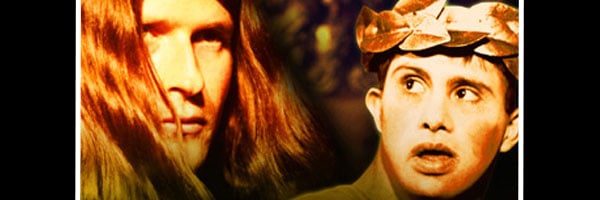
Will you ever release the first two on DVD?
I don’t have plans to do that. I still tour with the films and people can find out where I’m going to be with which film on crispinglover.com and they can sign up and a news letter will go out to them and I already have a show booked in Milwaukee that’s coming. I haven’t’ been very aggressive about booking because I’m doing a lot of stuff with Alice in Wonderland and this film, but starting in spring and summer, I’m going to be touring again. That’s my main interest for those two films on how to recoup my investments. I’m protective of the films for different reasons. I like having the Q&As that I do after the films. I don’t necessarily want them at this point in time to be out digitally and I feel like things could be taken out of context and comments can be made that most of the actors in What Is It? have down syndrome and I just don’t want things taken out and put out on the internet in ways that I’m not comfortable with. Maybe at some point I’ll feel like that, but there are different reasons why I don’t want to put them out in that way and, at some point, that could change. This next film that I’m planning to do with my father would be the first film that I would at least consider distributing in a more normalized fashion than kind of the vaudeville way I’ve been distrusting these two films. But these two films it’s been appropriate to distribute them that way and I enjoy doing the show. I’m still planning to continue to work with these films for a number of years to come and I’ve been doing it since 2005, so it’s been a long time and a lot of work, but I’m very glad to be doing it.
These Q&As are very lengthy. You really get to know the audience and they get to know you. Are you ever surprised by who is drawn?
Yeah, that’s definitely happens. They both get into taboo areas and I don’t consider them family films at all and no one under 18’s allowed; they’re not children films. They’re strictly for adults but I get families coming to the films, which is always strange to me, but then they ask questions and they’re happy to be there. I know I get all kinds of people and it’s interesting. It does surprise me in a certain way the variation of people that we get.
And the reactions are positive.
Yeah, when I do the Q&As, particularly after What Is It?, not so much after Everything is Fine!, people can get very upset with What Is It?. There are things that can make people uncomfortable. I would say a majority of the audience doesn’t get upset. It depends on what the order of the questions are. If it starts out with a more, what I call an aggressive question, the tone of the questioning can tend to be more aggressive and the reverse is true that if they’re, what I call easier questions, that people get intimidated in the group element. I’m open to the more aggressive questions and if I feel like it’s become too easy, I actually ask for the questions of people who are maybe upset or they feel like they’re going to go home and write some angry thing on the Internet. I’d rather them ask me the question because the purpose is to have these kind of forums where people can talk. My experience that people by and large have a really good time. It seems like 95% of the audience, to me, really enjoys it and then there’s some people that leave before the show’s over, but it really isn’t a large about of people. In What Is It? maybe of the two hundred-person audience three or four at the most will walk out.
You mentioned three scenarios about your character losing his arm. Was there anything you filmed that didn’t make it into the final cut?
There were takes that we talked about for the scenario, but everything we shot was in the film. There’s like portions of scenes that are edited out, lines, which is normal but everything that I shot in the film is in there.
Scenario-wise, what other ways did you guys come up with?
I think that one that was written with a truck that was backing up, a car tire being changed, there was a concept of a military device that was an amputation device. Something like that. But the one that really seemed to be the most applicable and visually interesting to pull off was the elevator thing. That wasn’t originally in there and it seemed like a visual scenario to be able to play.
What was the physical comedy like for you in this movie?
Well, I actually – my finger got crushed. I have most of the feeling back. [Laughs] I actually lost a little. The nerve got crushed because the elevator it was a combination of an old-fashioned elevator and new elevator. It was rigged, my finger got stuck in the thing and they didn’t know I was saying stop. They thought I was acting! But everything worked out alright. But, I generally don’t try to play comedy for comedy, there’s that adage which I like to follow, play comedy like tragedy and tragedy like comedy. I think in this culture playing comedy like tragedy is pretty well understood, but what doesn’t happen so much is playing tragedy like comedy and a lot of my favorite performances have been actors or actresses that do that, but that’s a rare thing to do. Usually the performances that get Academy Awards are films where tragedy’s played like tragedy and there’s less of a dynamic of range for that. But usually in either case it’s about the character figuring out what the character wants and needs and going after that in the scene. Like the elevator scene, it was clear that at first I was just going to get this luggage and then I was trying to get out of having my arm cut off.

If you could time travel back to a specific year, what year would it be and why? And what would you change?
It’s a varied question because just in terms of like aesthetics I kind of like the idea of going to Europe just before WWI before all of the destruction of the architecture. I like architecture and I’d like to see what the various cities looked like at that time. I like the idea of going to the 1800s or the middle ages. They seem like interesting places or times, but also it would be disconcerting if you got stuck in that time period in the 1500s and then got the Bubonic Plague. That would be really bad. [Laughs] And in terms of what I would change, I guess, personally, there’s a book I read around the year 2000 called How To Win Friends and Influence People, which is a great book by Dale Carnegie, and something that I learned from that book that I didn’t really understand was about not proving people wrong. I went to an academic school where logic was considered a very good thing and if you had debates or logical arguments, if somebody said A doesn’t equal C and then you say, well, A equals B and B equals C, therefore A equals C, and then everyone would say, ‘Well, okay that’s logical,’ and everyone would be happy about it. But in real world application it’s like if you do that to somebody they can really get upset. I tended toward doing that kind of thing up until I read this book around the year 2001 or so, so I would have liked to have read that when I was like 15 or something. It’s a good book with good lessons.
So you have the film you want to shoot with your father, but is there anything else you have coming up?
I’m in a film that comes out later this year called Mr. Nice and I’m in a Drunk History episode that’s going to be on HBO I think. I’m Edison and John C. Reilly’s Tussle. Those things are well done and I like that the general concept of that where you get somebody really drunk to the point that they’re just about to vomit, in fact they do vomit, and then they tell this piece of history. But what’s great about it is that it actually is probably about as accurate as anybody that’s telling history from a sober point of view because it’s always going to be wrong, but in the midst of that, there’s an emotional truth that comes out which I appreciated.
You guys are sort of pantomiming what the person is saying. How long does it take to nail that down?
It was pretty simple really. It was just listening to it, becoming familiar with it. They play it and then you just kind of speak it at the same time the person’s speaking it. That part of it wasn’t really very difficult. We shot it in a single day. They’re only about seven or ten minutes or something like that. John C. Reilly is the protagonist and I’m kind of the antagonistic character so I was there for just a number of hours It was less than a day for John and less than four hours for my side, but it was fun. I’m glad I got to do that.
Staff Writer for CinemaBlend.

